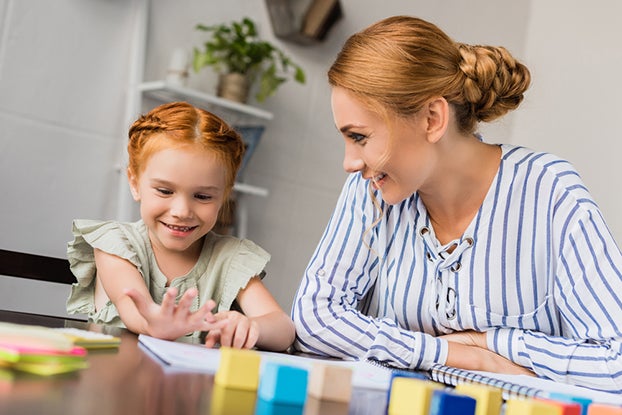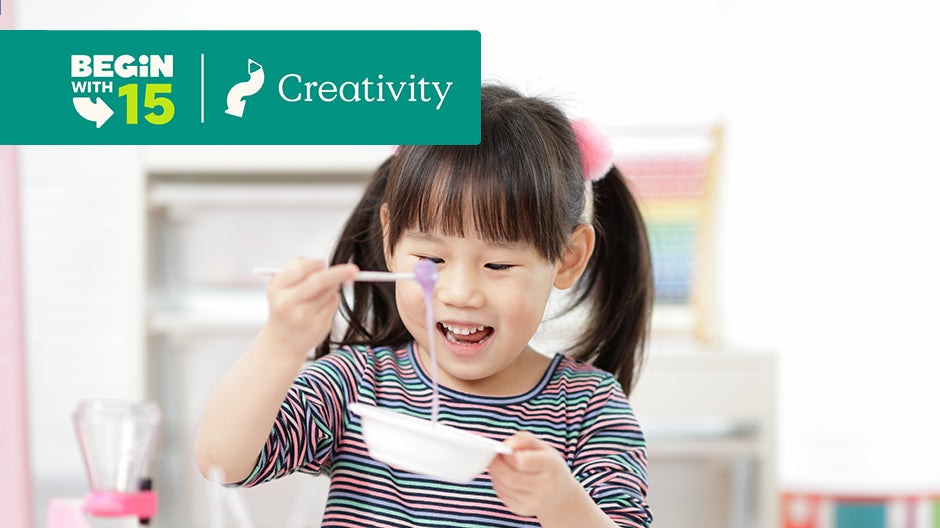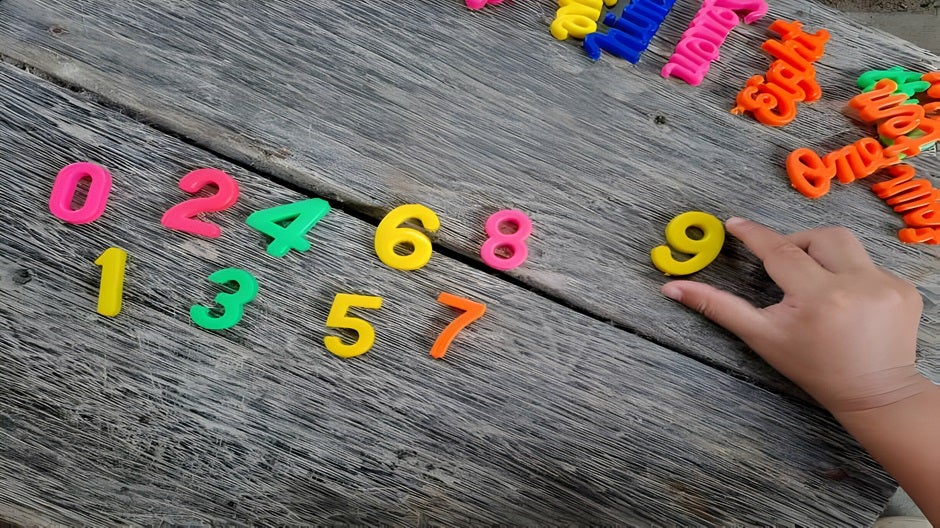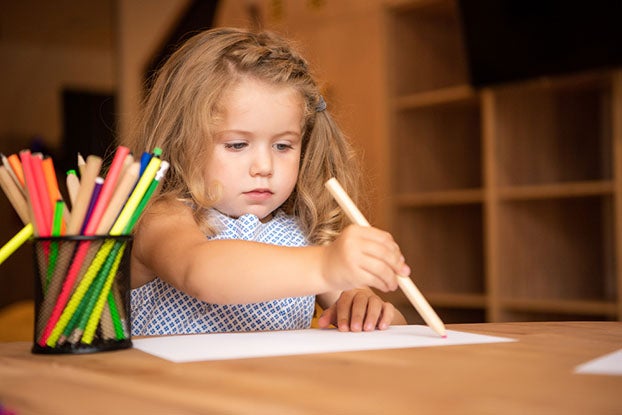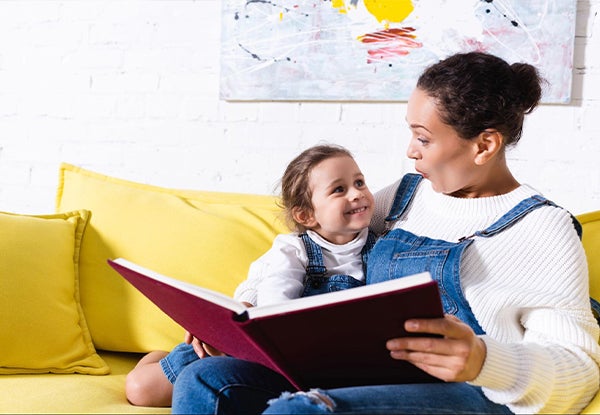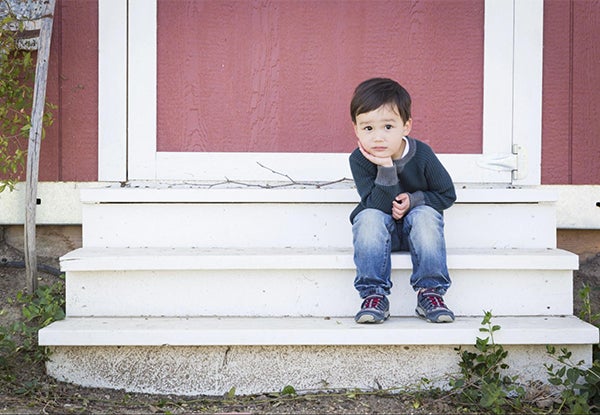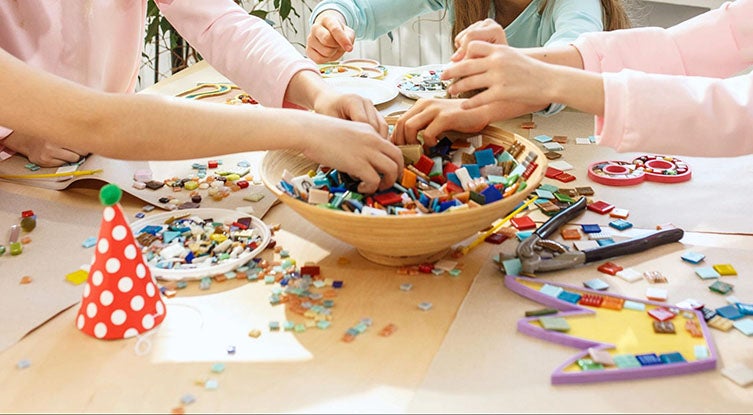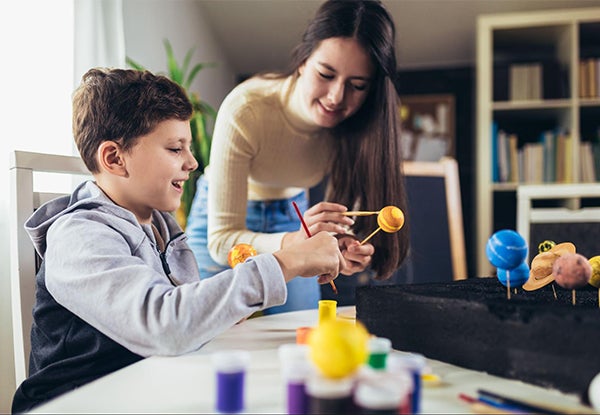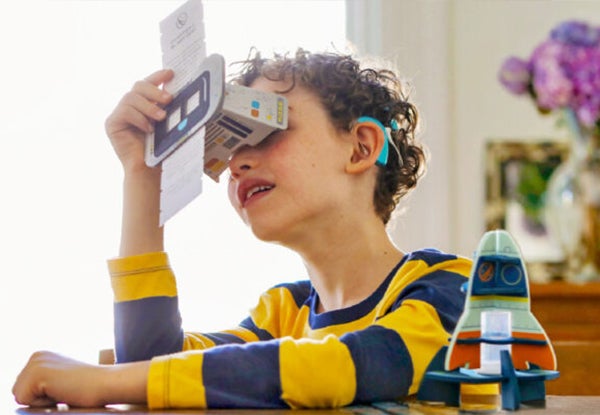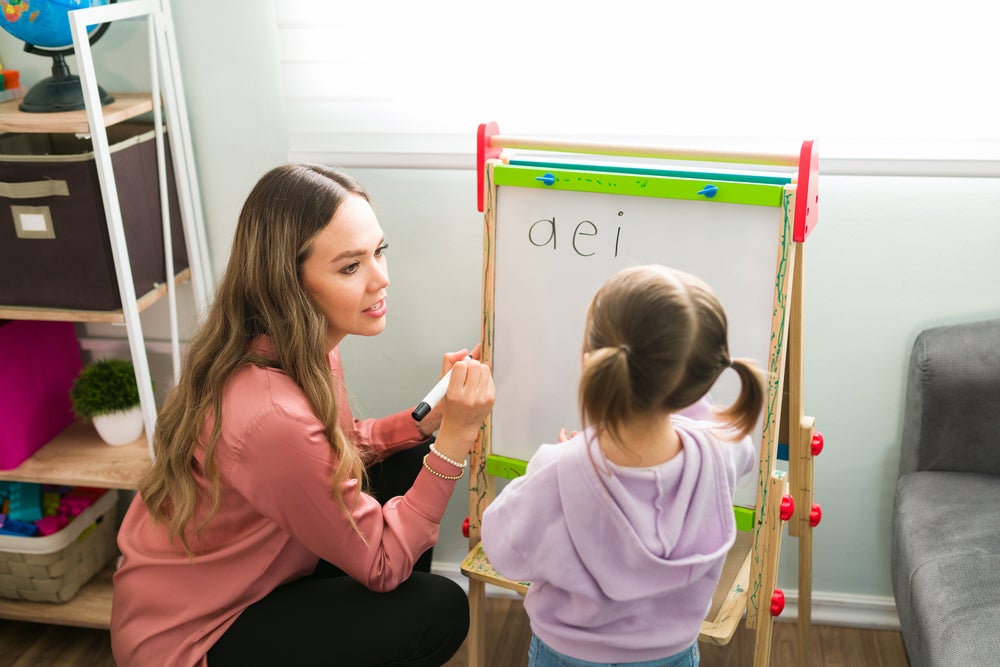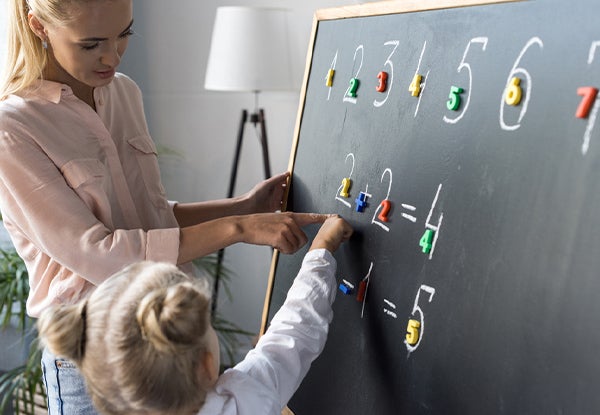Your child has progressed from kindergarten to first grade. That’s exciting news! There is so much learning to come their way, especially from their 1st grade math class.
Math skills and concepts build on each other from grade to grade, which is why children need to get a firm foundation so they can handle the more complex challenges as they progress in school.
As a concerned parent, you might be wondering what some of these mathematical concepts will be and, more importantly, how you can help your child master them. You don’t have to figure it out on your own.
Here, we will give you a breakdown of what to expect from your child’s math class. We’ll also add a few tips on how to help your young learner thrive through it all.
Let’s get started!
Table Of Contents
Why Is Math Important?
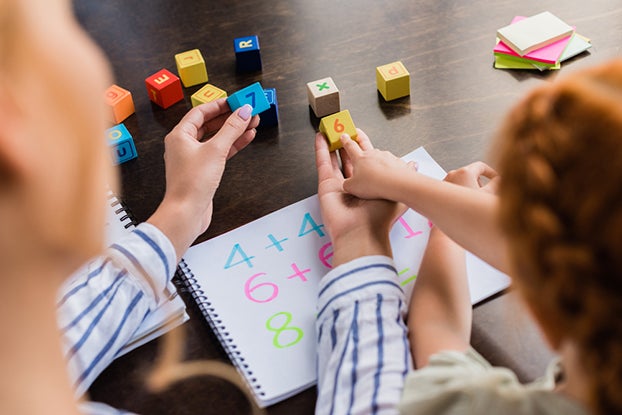
Math is taught in the classroom, but that doesn’t mean that’s the only place it’s relevant. We use it every day!
From the hexagonal bee combs to the circles, semi-circles, and crescents of the phases of our moon, mathematics is an essential part of the world we live in, and learning it helps us make sense of everything around us.
Did you know that math skills can also be linked to music? Children who play musical instruments use the same part of the brain when doing math. This is why studies have shown that music students do better in mathematics than their non-musical peers.
Sports and mathematics also have an interesting connection. Just think about all the coordination involved in performing well in certain sports. Research has shown that these skills can also be used to learn math.
In addition, mathematics helps us be stronger logical thinkers. Since most young kids tend to enjoy math time, it’s essential to foster this natural love for the subject just as much as we want to encourage children’s love for reading.
Helping children develop a love for mathematics generally works well when approached actively as a problem-solving skill rather than a rote memory task. Math helps children thrive in various aspects of their lives.
So, how do we get there? It all starts with the foundation.
Below are the key 1st grade math concepts your child will soon learn and some tips on how you can support them on their journey.
10 Important 1st Grade Math Concepts
In first grade, students study many different math concepts to help them meet state and federal standards. While their curriculum will cover various topics, understanding the key concepts below will help your child build a solid mathematical foundation.
1) Numbers and Counting
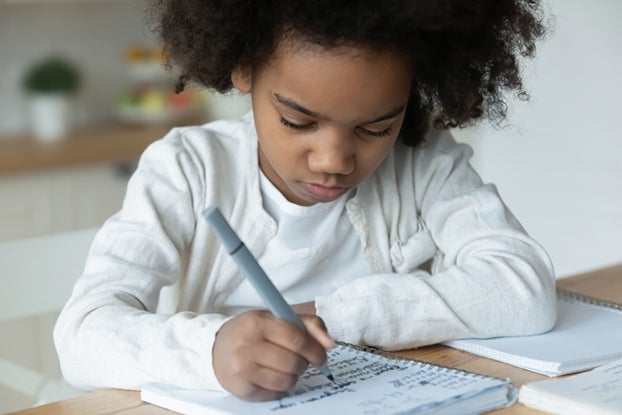
At this level (and for the next few years in school), learning different numbers and counting will form a significant part of your child’s mathematics lessons.
By the end of the first grade, your child will have learned to:
- Count and write numbers from 1 to 100
- Count by 1s, 2s, 5s, and 10s
- Count backward
- Count onward from any number
- Count backward from any number
There are different ways to help your child grasp numbers and counting at home, and hands-on activities work best.
An effective strategy is to help your child visualize what all these numbers mean. For example, instead of just memorizing the numbers, they can count bears, large dried beans, or even craft sticks. All of this will help improve their number sense.
2) Addition and Subtraction
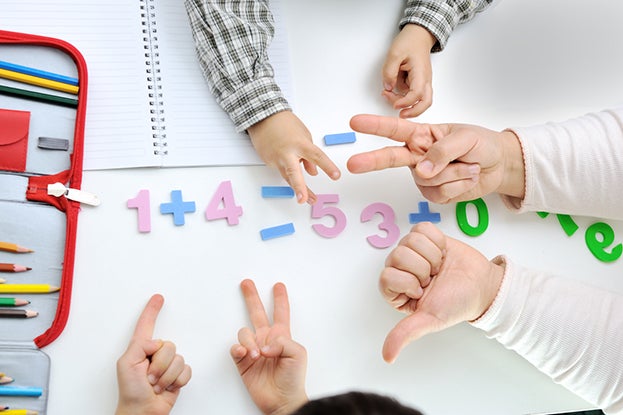
In 1st grade math, your young learner will start adding and subtracting numbers up to 30. They will also solve basic word problems with the help of drawings, objects, and equations.
By the end of the first grade, your child will have been shown how to:
- Add three one-digit numbers
- Write and show an understanding of the mathematical symbols (+, -, =)
- Solve problems involving one and two-digit numbers
- Solve problems involving an unknown. For example, 1 + _ = 4
- Use estimation to help find answers to math problems
Addition and subtraction are two math skills that can be demonstrated in everyday life situations. This makes it relatively easy to practice at home!
For instance, you might ask, “If you have two teddy bears and granny buys you three more, how many teddy bears will you have in total?” Or, “There were six strawberries in the fridge. Daddy ate some strawberries. There are now four left. How many did daddy eat?
3) 2-D Shapes
During pre-k, children get introduced to different shapes. In first grade, they will continue to extend their understanding of them.
By the end of the first grade, your child may be able to:
- Examine the attributes of different shapes (number of sides, faces, etc.)
- Name the 2-D shapes
- Draw the basic 2-D shapes
To help your child grasp these shapes at home, continue to point out and name the 2-D shapes in the world around you (circles, triangles, pentagons, etc.).
When doing so, remember to always highlight the attributes (e.g., this book has four equal sides, so it’s a square).
4) Sorting and Patterns
Understanding and sorting patterns also forms a part of 1st grade math.
Your first grader will learn to:
- Sort different objects by attributes such as color, shape, and function.
- For example, sorting a mixed group of blocks so that the red, blue, green, and yellow blocks are separated.
- In addition, if these blocks are placed in a pattern (e.g., green, yellow, green, yellow, etc.), your child should be able to both predict which color will come next and create their own identical pattern. This skill will help develop your child’s logical thinking.
- Recognize and extend more complicated patterns (such as red, red, blue, red, red, blue or square, triangle, circle, square, triangle, circle)
Continue to allow your young learner to play with fun building blocks and create their own patterns to help them master this skill. You can also start a pattern with the blocks and ask them to add to it. Can they correctly place the next four blocks?
5) Fractions
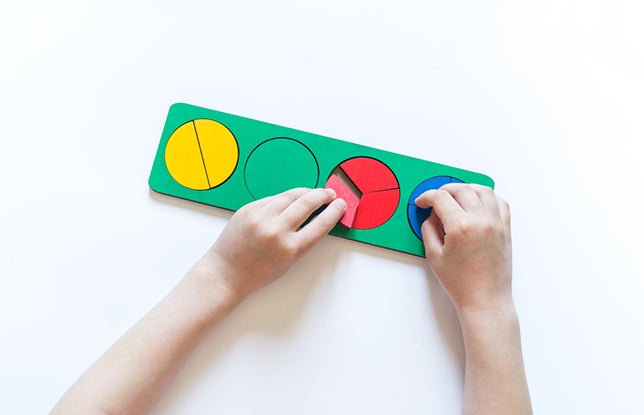
As a first-grader, your child will be introduced to fractions as equal shares and basic fractions such as ½, ⅓, and ¼. For children to fully grasp these concepts, it’s essential to keep things intuitive.
For example, you can start by helping them understand that a half is two equal parts, a third is three equal parts, and so forth. They also need to understand that although three is bigger than two, ⅓ is smaller than ½.
Fractions can be tricky for kids to learn, which is why it’s important to use practical and everyday items.
For example, you can help your young learner examine the fractions of a full pizza. Then, as you divide the pizza into different slices, talk about the parts that you’ve created from the whole.
The concept of equal shares can also be demonstrated from one object and a group. For instance, you can have ½ of a single item (e.g., ½ of a cookie), or you can have ½ of a group of objects (e.g., ½ of four cookies is two cookies).
6) Number Place Values
With all the counting in 1st grade math, your child will naturally be introduced to the concept of place values. For instance, understanding that in the number 288, the 2 is worth 2 “hundreds” (or 200).
There are various activities you can do at home to help your young learner with this concept, including:
- Using number lines
- Base ten blocks
For more ideas to help with number place values and other 1st grade math concepts, take a look at the book Games for Math: Playful Ways to Help Your Child Learn Math, From Kindergarten to Third Grade.
7) Time
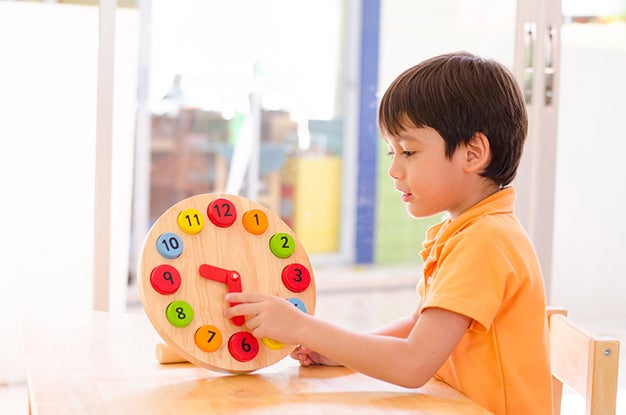
Telling time (both digital and analog) is an important life skill that kids learn from first grade. The concept of elapsed time will also be introduced at this stage.
In 1st grade math, your child will learn to:
- Tell time to the nearest hour, half-hour, and quarter-hour (sometimes even to five minutes)
- Make the connection between time and events (e.g., shorter, longer, after, before)
- Begin to distinguish between a.m. and p.m.
Understanding the analog clock can be tricky for a child who’s only exposed to digital clocks. So help your young learner by buying one (or making one for learning) to hang up at home.
You can then speak to your child about what it means when the hands move. To make things easier, start by helping them tell time to an hour and half-hour before progressing to quarter-hours.
8) Calendar Concepts
Day by day, week by week, month by month. That’s how we count the passing of time, another concept your child will study in 1st grade math.
Your child’s class will likely have a calendar on the wall, and they’ll practice reading it together. The students will learn about:
- How many days are in a week
- The order of the months of the year
- How to identify the date of today, yesterday, and tomorrow
- Patterns of time
To reinforce these concepts at home, ask your child to help you create a simple monthly calendar out of construction paper. Have them check the date each morning and ask what day of the week it is. You can also ask what day it’ll be tomorrow and what day it was yesterday.
If your family has special celebrations coming up, mark them on the calendar together. This will help your child connect the passing of time with upcoming events and activities. Countdowns are also a lot of fun at this age!
9) Measurements and Comparisons
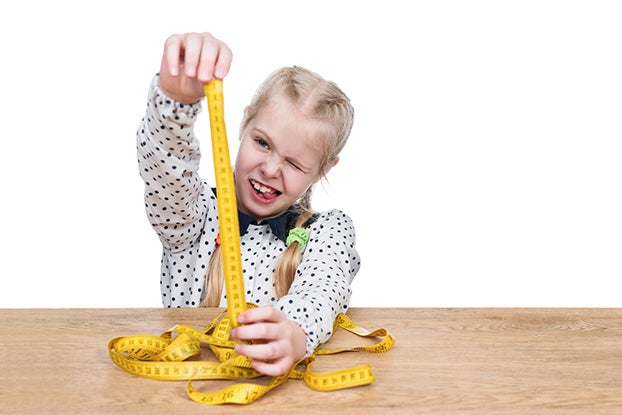
First grade math also involves some measuring and unit comparisons. While students in kindergarten measured using non-standard measurements (like paper clips or cubes), they will now learn how to use standard units like inches, feet, and pounds.
Your child will learn how to measure using a ruler and, after taking measurements, compare and order objects by length. First-graders will also learn how to compare the weights and volumes of different objects.
To help your young learner at home, keep rulers nearby and take measurements together of some of the objects they love (e.g., stuffed toys, cookies, etc.). Challenge them to find objects that are longer or shorter, heavier or lighter, or bigger or smaller than others.
You can also use everyday objects to teach comparisons. For example, have your child compare the length of their pencil to a crayon or the weight of an apple to a jug of milk. Have them predict and then measure to see if their guess was correct.
Bonus tip: If you’re a regular baker, why not help them see how you use measuring tools to create their favorite treats? Yum! You can use the Kitchen Adventures subscription from Little Passports to find great new recipes to try!
10) Statistics and Data Analysis
If you’ve ever taken a statistics course, you might be surprised to see this concept in a 1st grade math curriculum. But don’t worry — your child won’t be calculating standard deviations or creating complicated graphs just yet.
In first grade, they’ll learn:
- How to collect, organize, and represent data using pictures, tally marks, and simple graphs
- How to interpret the data shown in these visuals
- Basic vocabulary related to statistics such as more/less, most/least, same/different
- Decide whether or not something is reasonable based on data (for example, if a jar has 10 blue marbles and three red marbles, is it reasonable to say that most of the marbles are blue?)
Introducing these concepts early can help your child develop critical thinking skills and make sense of the world around them.
You can ask your child to gather and represent data to practice these skills at home. Here are a few ideas:
- Count how many stuffed animals they have of each color and show the data with a simple bar graph.
- Tally the different types of fruit in your fruit bowl and create a pictograph to show which has the most.
- Measure their height and plot it on a line graph each month to track their growth over time.
Who knows — these activities may spark an interest in data analysis and statistics that could lead to a future career in mathematics, science, or even sports analysis. So, have fun with this concept and encourage your child’s curiosity!
Helping Your Child With 1st Grade Math
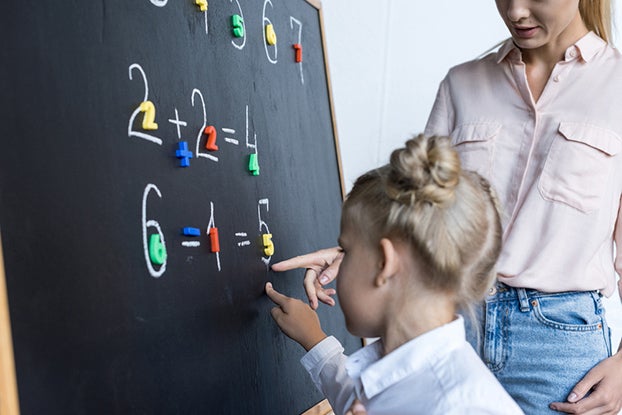
We’ve already mentioned a few ways in which you can help your first grader with math at home. In addition to the above, playing math games is a fun and easy way to practice math at home!
Here are a few simple games you can play that don’t require tons of special materials or prep time.
Addition War
Help your child build addition fluency with this fun game.
What You’ll Need
A basic deck of cards with the face cards and Jokers removed (Ace, King, Queen, Jack)
What to Do
Shuffle the deck and divide the cards evenly between two players. Leave the cards face down in a stack.
Each player turns over the top two cards in their stack and puts them side by side. They need to add the value of these two cards together.
The players then compare sums. Whoever has the highest gets to keep all four cards. They put them in a discard pile next to their stack.
If there’s a tie, it’s time for a war. Each player turns over two more cards and adds them up. Whoever has the highest sum gets to keep all eight cards.
Continue playing until the stacks are empty. Then, count the cards in the discard piles. Whoever has the most is the winner.
Guess My Number
This quick game is perfect to play in the waiting room or car.
What You’ll Need
No materials are necessary.
What to Do
Secretly pick a number between one and 100. Ask your child to try to guess what number you’re thinking of.
To narrow it down, encourage them to ask yes or no questions like these:
- Is your number bigger than 50?
- Does it have a 3 in it?
- Is it an even number?
They can keep asking questions until they guess your number correctly. Then, ask them to pick a secret number, and you try to guess what it is.
Simon Says: Math Style
With a simple twist, this classic game of follow-the-leader can help your child practice math skills.
What You’ll Need
No materials are necessary.
What to Do
Pick one player to be Simon. This person gives the commands for the other players to follow. But they have to listen carefully because they should only do the commands that start with the phrase, “Simon Says.”
If they do something that Simon didn’t say, they’re out until the next round.
Here are some ideas for math-based commands. Simon says:
- Draw a circle with your finger
- Move left three steps
- Hold up three plus one fingers
- Point to a rectangle
- Say what month comes next
- Do jumping jacks while counting by 2s from two to 20
Encourage your child to come up with their own commands based on the concepts they’re currently studying.
Inch by Inch
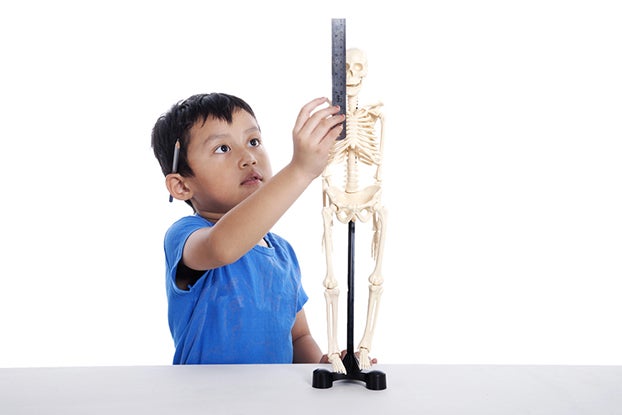
This simple game is perfect for helping your child learn to measure to the nearest inch.
What You’ll Need
A ruler marked in inches
What to Do
Challenge your child to find something around the house that’s one inch long. Once they make a guess, hand them the ruler to check.
After they find an object that’s an inch long, have them think of something two inches long. Continue increasing the number of inches and see what your child can find for each one.
Clothing Sort
As your child plays this game, they’ll practice sorting things by attribute.
What You’ll Need
A basket of clean laundry
What to Do
Ask your child to sort the laundry in different ways. For example, they can sort by:
- Color
- Type (such as shirts in one pile and socks in another)
- Size
- Owner
After they’ve sorted the laundry several times, let them help fold it and put it where it belongs.
Likely or Not Likely?
Help your child learn more about probability by playing this game.
What You’ll Need
No materials necessary
What to Do
Ask your child to decide if a given scenario is likely or unlikely to happen. Then, ask them to explain their reasoning.
For example, is it likely or unlikely that:
- We’ll eat pizza for dinner
- There’ll be snow in July
- A cow will fly
- They’ll wear socks tomorrow
Encourage your child to come up with their own scenarios as well. Just don’t be surprised if they wind up going a little over-the-top with their suggestions. Kids at this age are so creative!
Other At-Home Math Activities
You don’t need anything fancy to help your child practice 1st grade math skills. Here are some examples of more math activities your young learner will enjoy at home:
- Fill in a number grid puzzle
- Build objects with legos and measure
- Number Hunt, Hopscotch, Is It A Number, and Find A Number
- Spend 15 minutes a day using the HOMER app by Begin
- Sort a colorful snack by color
- Ask your child to make playdough circles and cut them into halves and fourths with a plastic knife
You can also pick math-themed picture books to read together. Here are some of our favorites:
- Math for All Seasons by Greg Tang
- Chicka Chicka 1,2,3 by Bill Martin Jr., Michael Sampson, and Lois Ehlert
- What’s Faster Than a Speeding Cheetah? by Robert E. Wells
- How Big Is a Foot? by Rolf Myller
- What’s New at the Zoo? by Suzanne Slade
- Measuring Penny by Loreen Leedy
As you read, talk about the math concepts in the book.
Math Is All Around Us
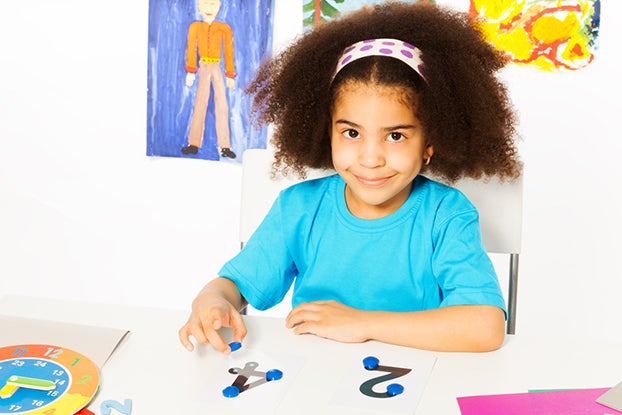
Helping your child grasp 1st grade math concepts at home is easier when you focus on the fact that mathematics is a part of our everyday lives. It is in the shape of road signs, the parts of sliced pizza, and even the watches on our wrists!
Sometimes kids (and parents) forget that math can be lots of fun. So whenever you can, incorporate games and activities, like the HOMER app by Begin, to bring a little excitement to all the learning.
Will this help your child become our next best mathematician? Only time will tell. But one thing is for sure — all of the great mathematicians started somewhere. Even Isaac Newton had to master 1st grade math!
For more ideas and inspiration, check out all of Begin’s Parent Resources.
